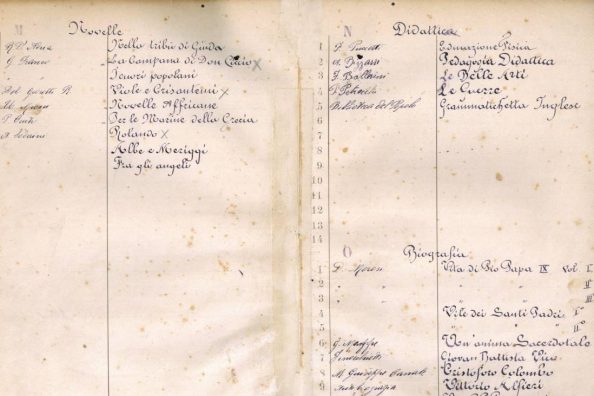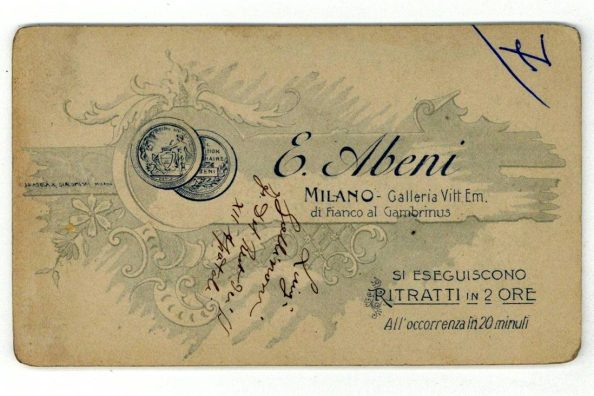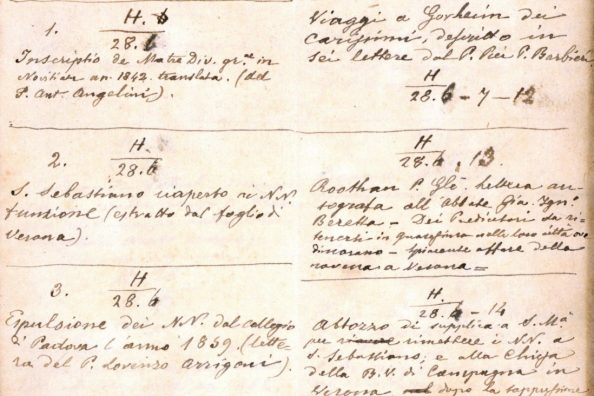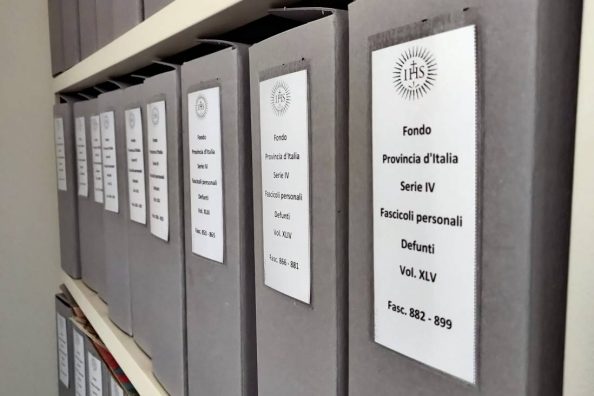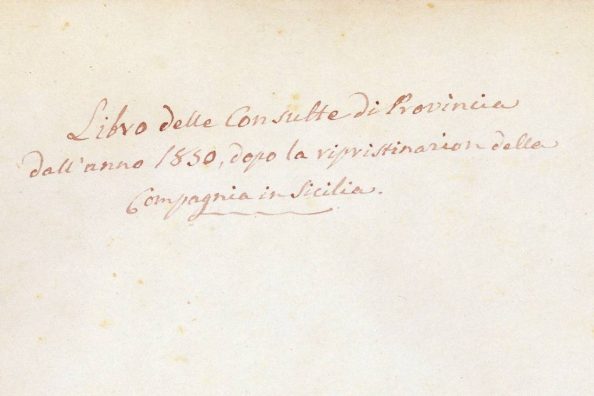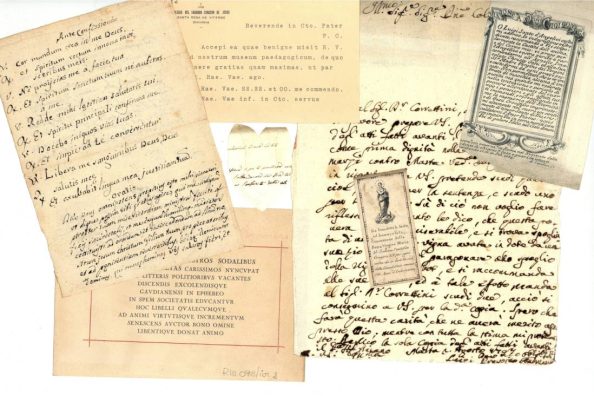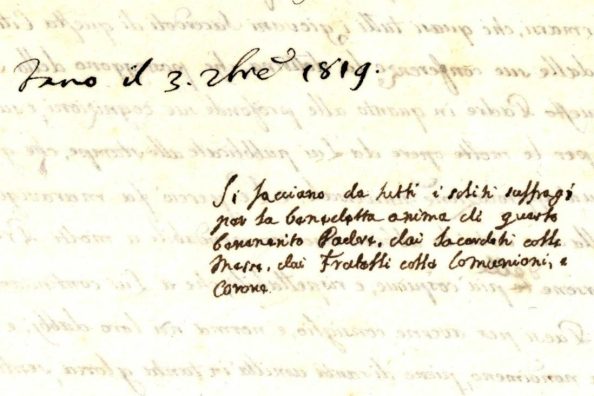A 500-year-old shopping list
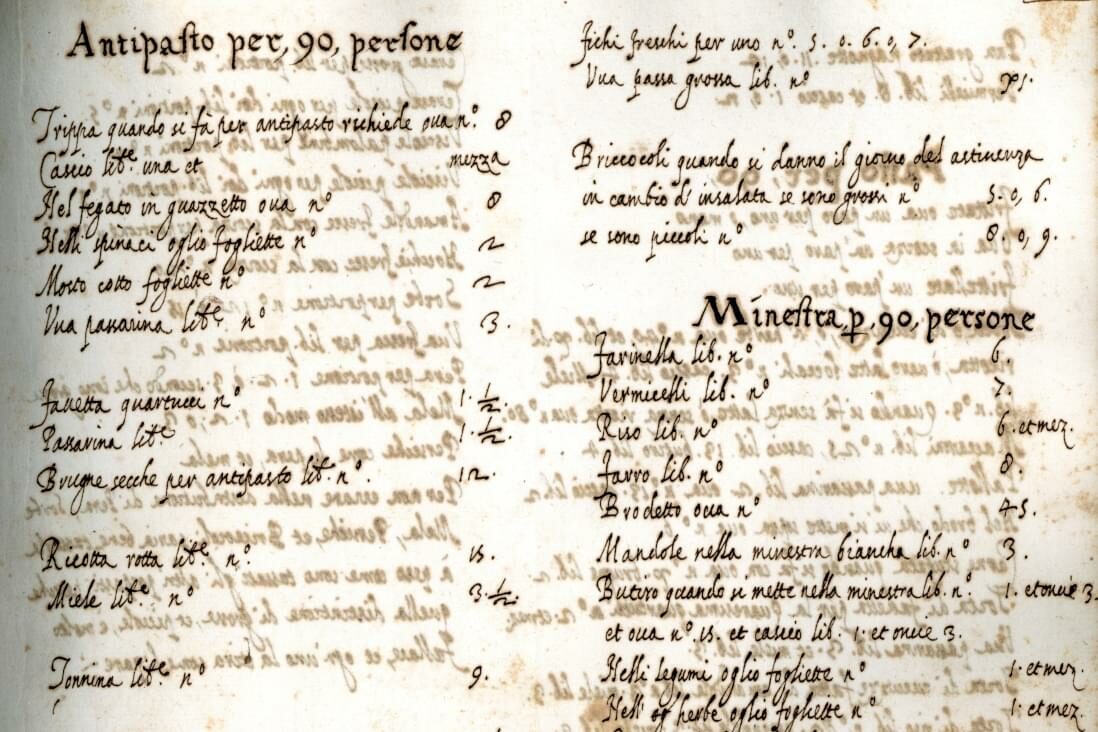
Doing the shopping for oneself or for a family involves a certain degree of organisation, just think what it meant, at the end of the 16th century, to do it for an entire and populous novitiate. Today we are in Rome, at the end of the 16th century, in the first novitiate of the Society of Jesus, that of St. Andrew at the Quirinal.
Our historical archive preserves only one volume of the documentation produced by the novitiate for the Ancient Company, thus from the first years of the probation house until 1773.
The entire archival fonds of the novitiate of St. Andrew, produced during the centuries of the Old Company are kept at ARSI, while the papers produced from the reconstitution of the Society of Jesus until the closure of the novitiate in 1871 are kept in our archive.
It is precisely this volume, concerning the customs of the novices, their daily timetables, rules and house notices, that gives us the cue for today’s column. In fact, among the timetables, rules and readings recommended to the novices, one finds a veritable shopping list: the ingredients needed to feed the entire community, many of which were bought in the markets of Rome, others came from the land cultivated by the novices, which provided the community with fruit, oil and wine, the land was located in Macao, an area of Rome today corresponding to Castro Pretorio. Work in the vineyard was also an integral part of the novices’ training.
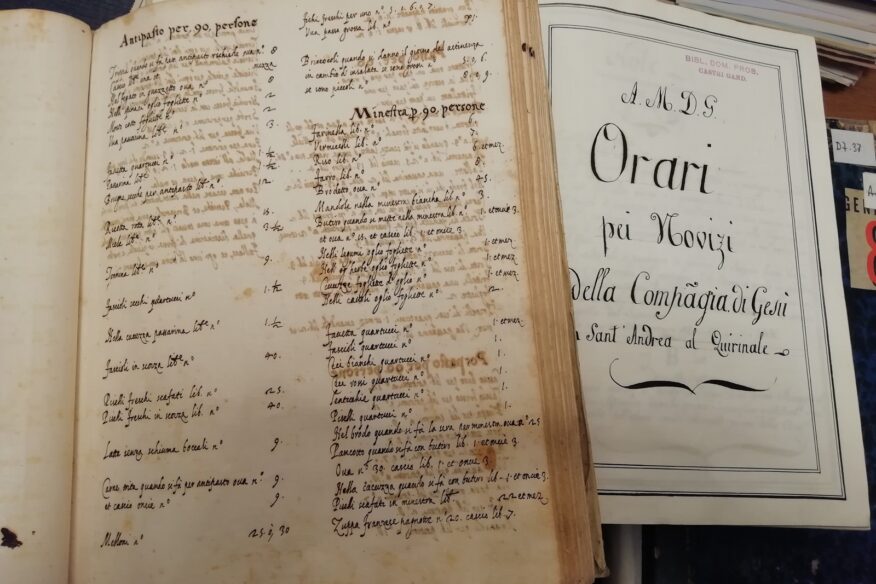
In order to know what the dietary needs of Jesuits who lived five hundred years ago were, the photograph in the column shows us the list of foods.
Among the ingredients there are:
Cascio (cheese) [formaggio]
Dried prunes
Favetta
Tripe
Liver “in guazzetto”
Cooked must
fresh figs
“mezza cucuzza” [in Roman dialect, vegetables like pumpkin, courgette]
Fascioli in zest
Coarse sultanas
Briccocoli (broccoli) [Broccoli]
Meloni [meloni]
Minced meat
Milk without foam
Flour
Vermicelli
Pancotto
Stewed meat
Eggs
Cascio duro (seasoned cheese) [formaggio a pasta dura]
Cherries
Sour cherries
Hazelnuts
Persiche (apples and pears)
Fresh peeled peas
Fresch peas
In addition to telling us what the Jesuits ate at a time before the spread of tomatoes and products that arrived from the Americas – already known for almost a century, so much time has elapsed since the discovery of America, but not yet marketed at retail level – this list also helps researchers studying the history of the Italian language, being able to verify what many ingredients were called at the time and understanding lexical and linguistic evolutions.
Maria Macchi

